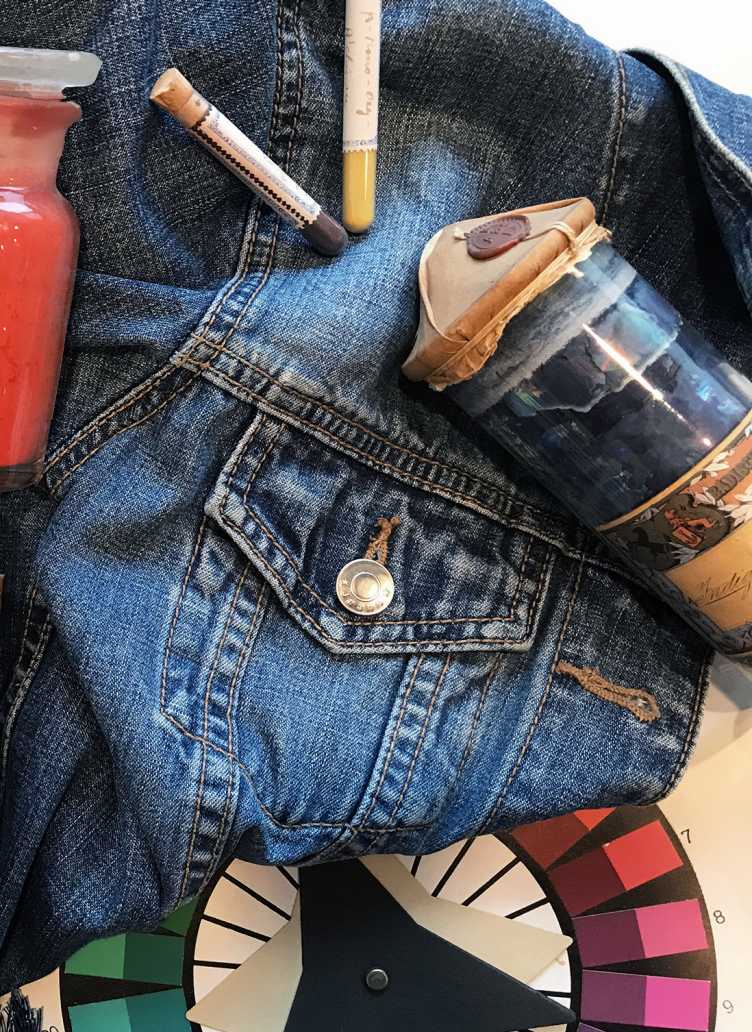Creating artificial colors
Dyes helped Switzerland create a flourishing chemical and pharmaceutical industry. On the H floor of the HCI building, you can follow the chemical traces of dyes from the past to the present.
A blue jeans story

Levi Strauss filed his first patent for jeans with Jacob Davis in 1873 (to this day the label is still called Levi's). Once workers' trousers, jeans became a global cult, also because of their color, indigo blue, one of the oldest plant dyes. But the natural dye could not meet the demand in the long run. Fortunately, Adolf von Baeyer succeeded in synthesizing the dye in 1880. BASF and Hoechst then acquired the rights to this product. Ten years later, ETH Prof. Karl Heumann discovered a chemical synthesis that finally enabled large-scale production of artificial indigo – today the dye of choice for almost every pair of jeans.
Fuchsia red and the roots of the Swiss chemical industry

In the 19th century, so-called tar dyes were produced to meet the great demand of the textile industry. They were made from components of coal tar. Henry Perkin discovered the first synthetic dye, Mauvein, and founded the first tar dye factory. In 1885, François-Emmanuel Verguin patented the dye fuchsin. A patent dispute led to several chemists emigrating to Switzerland, where patent law did not yet exist. They settled mainly in Basel and founded the chemical and pharmaceutical industry in Switzerland. To this day, tar dyes still find many applications.
Adolf Jenny Trümpy's fabric pattern books

The 17-volume collection of printed samples by Adolf Jenny Trümpy (18th–20th century) is indeed fascinating in both color and design. The large-format cardboard pages with fabric samples and inscriptions as well as inserted dye recipes are evidence of a long-developed art and literally show how colorful and exciting chemistry and its applications can be.
More information and pictures on the details page.
Literature and reading tips
König M. (2016): Chemie und Pharma in Basel 1: Besichtugung einer Weltindustrie - 1859 bis 2016. Basel: Christoph Merian Verlag
Rys P. und Zollinger H. (1982): Farbstoffchemie. Ein Leitfaden. 3. Aufl. Weinheim: Verlag Chemie
Zollinger H. (1999): Color. A Multidisciplinary Approach. Zürich: Verlag Helvetica Chimica Acta, Weinheim: WILEY-VCH